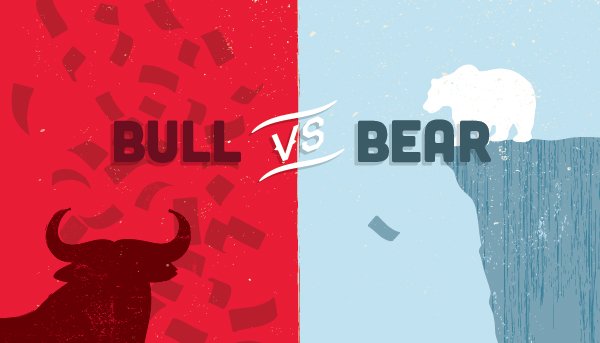
My last article showed how you could work towards a carefree retirement like my grandfather had by looking at your spending and saving choices today. Your spending and saving decisions are the number one behavior that affects your financial life. Once you have that under control, you hopefully have money to invest. What do you do now?
What Now?
Let’s look back to what happened before 1980. That’s more realistic going forward than to expect a return of the high flying 1980s. For those who survived the 1980-2010 roller coaster with savings intact, interest rates could go up long term, but “normal” pre-1980 interest rates were just a few percentage higher than current interest rates and the stock market is a bit high, but about where it should be.
Buying low and selling high is still the way to make your money work for you. Unfortunately, the way we’re wired, we love to buy high, when investments are exciting. Then we want to throw in the towel when prices are low. This is a formula for failure.
Stocks are often the investment to emphasize but sometimes more in bonds are called for. Sometimes cash is king, when interest rates are super low and the stock market is valued high (sound familiar?) Most people think this ratio depends on your age, but that’s not the only parameter to look at when deciding your “asset allocation,” or how much you invest in bonds vs stocks vs cash vs any other investment choice.
A huge portion of money today is being invested in basic, low fee investments, like index funds and ETFs (Exchange-Traded Funds). You won’t “beat the market” but you’ll do as well as the market, right? Maybe, maybe not. Not all index funds and ETFs are created equally. You still need to do your homework on the fees and what they invest in. And know that when you buy an index fund to “match the market”, you’re choosing to buy the big losers as well as the high flyers.
Sears was in the Dow until 1999 when it went from a high of over $60 in 1998 and tanked to below $40 in in 1999. If you were invested in the “index” you would have held Sears to the bottom before being rid of it. Individual stock holders could sell long before it hit bottom. Sears wasn’t removed from the S&P 500 until 2012 when its value was below the required threshold to be in the S&P 500.
The index funds have helped investors that buy individual stocks because the index funds have distorted the price of some stocks and created market inefficiencies. When a bunch of money goes into an index fund raising a particular stock price higher than it should be, it’s a great time for someone who owns that stock to sell and take a profit. The person with the index fund will just hold on to it while the price peaks and then sinks. On the other hand, if a stock is undervalued, the index doesn’t take advantage of the bargain and buy more shares. And, as in the case of Sears, the index may hold on to a tanking stock that should be sold.
In addition, asset allocation at any given point has been shown to be far more important to wealth accumulation than what particular stock or bond you buy. If you always keep the same asset allocation, you will sometimes be over invested in stocks and under invested in bonds (see below for a time when investing heavily in bonds made sense) or vice versa. While no one has a crystal ball telling them the highs and lows of a market, there are usually pretty good signs that an asset class is in the range of the bottom or the range of the top. Right now both stocks and bonds, overall, are overvalued. What will you do?
The answer to that question is not simple or straightforward. It depends on your individual situation. The internet will give you great generic advice, but I’ve never met a generic person. Talking to a professional can help you sort through your priorities and risk tolerances. For example, someone that has a million dollar income will deal with risk tolerances differently than someone who is living pay check to pay check. If you are planning for just retirement, you will plan differently than if you have to pay for your kids’ college before retirement.
What Happened?
Investing was far easier for my grandfather then for you or me. Interest rates were pretty steady, between 2% and 5% most of his life. In retirement, interest rates went soaring to a peak of 15% in 1980, the highest interest rates of all time. Having reliable, steady, high interest rates in retirement is so sweet!
The stock market was a roller coaster during his lifetime, as it has always been and always will be. The Dow Jones Index went from around 1350 to as high as 7000 before returning to below 3000 before he died in the early 1980s. If you were invested in stocks back then, utilities were where you found the best growth. The Dow Jones Utility Index went from just over 10 in the early 1940s to as high as 160 by the 1980s, or about a 7% annual return.
Life changed in the 1970s when I was a kid and my parents were saving for the future. Interest rates went crazy, as did inflation. From the “bumping along” 2%-5% rates, interest rates shot up in the late 1970s to early 1980s. This turned all investing heavy into bonds and the stock market was flat 1965 to 1972. Life was uncertain and scary for most of us. Buying a house with a mortgage interest rate as high as 20% was daunting to many, prohibitive to most. Grandpa’s generation was happily retired invested in bonds at those high rates with a steady retirement income as a result.
Investing has always been complicated, but probably more so today than ever before. We think 1980-2010 was “normal”, but it’s no longer relevant. Our journey through our working and retirement life is nothing like Grandpa’s journey. So while he taught me a lot, I have to figure out this one myself.
The information given here is general in nature. If you would like to know how it pertains to your particular situation click “contact” above. If you found this or any of the other articles interesting, please subscribe at the bottom of this page.







About The Author: Tara Unverzagt
More posts by Tara Unverzagt